Ruing the Ruins
Patrick Keiller's latest film, Robinson in Ruins, bores down into the bucolic hum-drum of Oxfordshire to unearth twisted sinews of history, production and militarisation. By way of review, Adam Kossoff reworks the latticed structure of the film and its concepts into a Keilleresque lexicon
Patrick Keiller's new film Robinson in Ruins (2010) continues Keiller's wanderlust, film camera and tripod in-hand, across the ailing townscapes and landscapes of England. As with his previous Robinson films, London (1994) and Robinson in Space (1997), Keiller's alter ego, Robinson provides the conversational voice-over. He is a man who looks at the world from the outside in, with a penchant for ironic aphorism and an empathy for the common man and woman, as well as a vehicle for numerous facts and information.
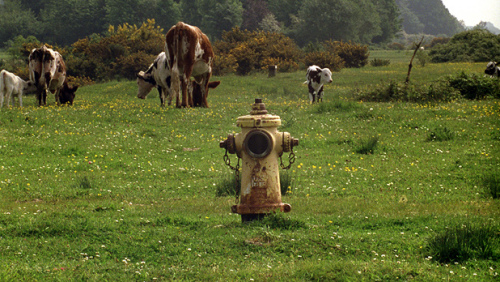
Images: All stills from Patrick Keiller's Robinson in Ruins, 2010
Abject: See Place.
Absence: 'The true identity of London is its absence', one of the characters in London says. Film - the moving image - absents the spectator. The combination of composition, compression, framing, re-framing, editing and the screen itself, removes the audience from the spaces they are watching. So whereas the typical assumption is that the moving image conveys a ‘thick space', space with a lived-in depth, the moving image actually utilises what can be called ‘thin space'. Keiller also talks of deliberately choosing visual material devoid of 'human presence and activity'. In other words, he highlights a sense of loss. See Flatness, Image, Otherness, Hollowness.
AHRC: The Arts & Humanities Research Council is a government research body which funded the making of this film as part of a larger project called Landscape and Environment. See Outputs.
Alienation: The flâneur sees the world through their alienation from the world; in celebrating their alienation they find themselves and their place. See Otherness.
Archive: See Memory, Forgetting.
Caravans: Towards the end of the film we are shown the caravan where Robinson's films and journals have been discovered. See Absence, Dwelling, Memory, Forgetting, etc.
Combine Harvesters: There is a long passage about the status of wheat in this country and these machines - mechanical monsters - are depicted in pictorial settings in long, durational takes; we can only conclude that their function is to negate our relationship to the pastoral. See Technics, Organic.
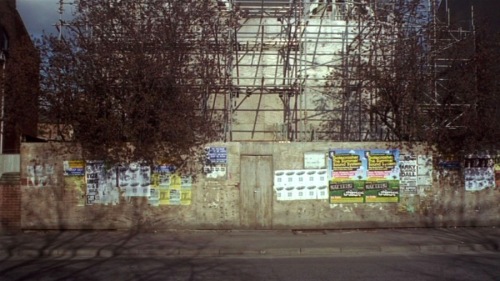
Dérive/drifting: See Psychogeography, Robinson.
Diary: Robinson In Ruins follows the seasons; it also relates the narrative sequence of the events of the day, its main focus being the banking crisis. The documentary essay and the diary have common tendencies, though the latter, revolving around the real singular ‘I', is perhaps more subjective than the former. See Subjective, Immanence.
Dwelling: Keiller foregrounds a critique of contemporary dependence on Martin Heidegger's concept of ‘dwelling'. A dedicated flâneur, he questions the idea of the dependence on homeliness and place as central reference points for architectural and urban theory. However, he reduces Heidegger's argument to an empirical position and confusingly brings in the idea of the Heideggerian ‘Thing'. Keiller ignores the other dimension of Heidegger's concerns for the qualities of dwelling, that of thinking. Although one could also say that the wandering flâneur significantly leads to a thinking/dwelling that engages with a strong sense of otherness, a dwelling that is outside of homely belonging. See Mountain, Place, Space, Otherness, Wanderlust, Flâneur, Forgetting, etc.
Enclosure Act: Robinson in Ruins details localised resistance to the Enclosure Act, the process by which landowners legally forced people off the land, giving their sheep the space to graze. This forced rural populations to move to urban areas, providing labour for industrial capitalism.
Essay: See Immanence.
Exterior: Keiller, the flâneur, doesn't engage with private interiors very much. We view the world from the outside; the voice-over provides the insight. Which says something about the image in contrast to language; the image doesn't communicate history, thinking, dwelling in a direct way. See Dwelling, Image, Neo-Gothic.
Film: See Robinson in Ruins.
Financialisation: See Spider's Web.
Flâneur: Keiller has claimed to be kind of post-modern flâneur, one who also uses a car. See Alienation, Dwelling, Psychogeography, Robinson.
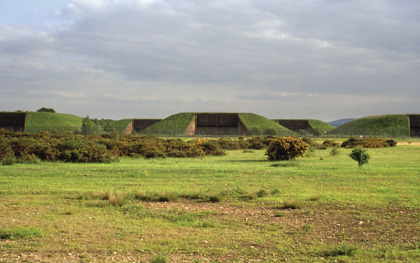
Flatness: In the first two Robinson films the flatness of the urban, of the façades of buildings, of fenced off areas, of warehouses, and the exteriority of the flâneur, imposed a certain kind of aesthetic, a thin-screen aesthetic, that served to highlight the construction of the image. The spaces of Robinson in Ruins seem to have led to a different kind of aesthetic, a more pictorial and durational one, which dwells on the temporal and the movement of flowers in the field. See Absence, Combine Harvesters, Image, Organic, Wind Machines, Technics, etc.
Flowers: See Organic and Wind Machines.
Forgetting: A study of forgetting in relation to film is required. For example, cinema, Hollywood film in particular, has a deep need to forget what it can't narrativise or include due to ideological and financing reasons. In point of fact, narrative is a form of exclusion and forgetting. Why is memory so eulogised? As we know it leads to revenge, death-denial, lack of forgiveness and the romance of cinematic temporal presence (after Henri Bergson and Gilles Deleuze). See Memory, Otherness.
Frame: The framing in Robinson in Ruins is less bounded than in other Robinson films, seeking to suggest openness, a different move to that of the first two Robinson films. See Flatness, Hollowness, Image.
Hollowness: Space is hollow, but the difficulty is capturing this on film, according to Keiller. See Dwelling, Flatness.
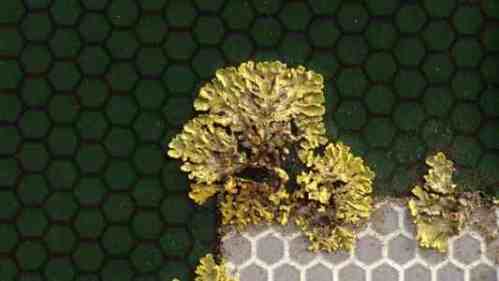
Image: The image blurs the boundaries between the interior and the exterior, dependent on affect, for effect. The image is important for the flâneur, seeing as they (partly) inhabit the imaginary. See Exterior, Flatness, Ruins, Wind Machine.
Immanence: Theodor Adorno argues for immanent critique in relation to the essay form, a method that responds to the object according to its own concerns, rather than imposing a set of pre-ordained judgements or principles. Adorno wrote: 'In the essay discreetly separated elements enter into a readable context... Through their own movement the elements crystallise into a configuration. It is a force field...' This move is particularly relevant to the flâneur who sees the city as a text, one that is always in process. Robinson in Ruins can be said to see landscape as a text in process (perhaps for the worse). See Essay, Interior.
Inorganic: See Organic, Technics, Combine Harvesters.
Interior: See Exterior.
Keiller, Patrick: A short interview with Keiller: http://www.guardian.co.uk/film/video/2010/nov/24/patrick-keiller-robinson-in-ruins
Labour: See Spider's Web, Otherness.
Landscape: In the discussion that followed the screening at the BFI Southbank, Keiller said his main theme was, 'To whom does the landscape belong?' Perhaps Robinson In Ruins can be seen as part of the landscape tradition of British film-makers, from Chris Welsby to Derek Jarman (and other mainstream realist film-makers)? In an essay on the experimental film-maker William Raban, Michael O'Pray has written that the landscape film exemplified 'a problematic terrain of the aesthetic of pleasure, in its most acute form.' See Combine Harvesters, Organic, Absence, Wind Machines.
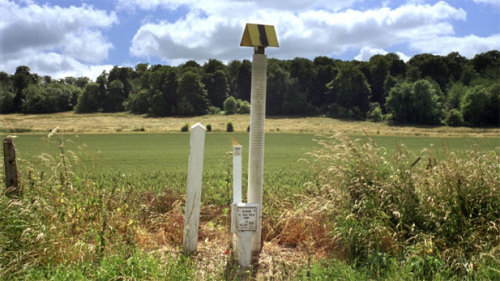
Lichen: At the start of the film there is a brilliant observation of lichen growing on a motorway sign. This kicks off Robinson's ideas on the adaptability of the organic, where life continues despite the prevalence of Capitalism's ruination of the landscape. The voice over recites how Robinson is considering communicating with 'Non-human intelligences.' See Otherness, Organic, Neo-Gothic.
Lidl: The film returns twice to exterior shots of Lidl. It contemplates the customer profile of this budget supermarket which has a reputation for treating its employees badly.
Long Take: See Spider's Web, Otherness.
Loss: See Absence, Caravan, Place, etc.
Maize: The film spends some time ruminating on the growing of maize. See Organic.
Memory: Film is typically regarded as a medium that memorialises and temporalises. Keiller sustains the memory of Robinson over three films. The main ploy of the latest film is that it is constructed from the reels of film and the journals mysteriously left behind by Robinson in a caravan that we don't see until the end of the film. See Archive, Caravan, Forgetting.
Middle Kingdom: A spot slightly north of Coventry in the Midlands. Robinson in Ruins, centred in Oxfordshire, is slightly off to the centre of middle England, but it is an actual centre. 14 out of the 28 members of the current coalition government cabinet come from Oxford or Cambridge Universities, 9 from Oxford. The shadow cabinet is equally well represented.
Military: Keiller uncovers a network of government oil pipelines running underneath England's green and ploughed fields, serving extensive military bases.
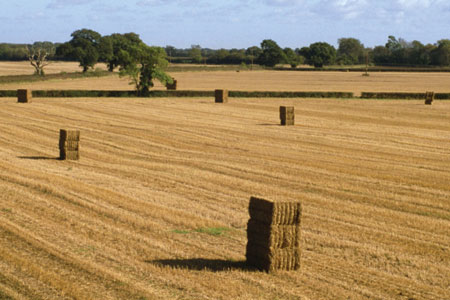
Negation: In Keiller's films the voice-over is a form of negation. In their book on the film soundtrack, writing mostly with reference to film and film music, Adorno and Eisler emphasise that montage best occurs in that gap between the image and sound. In true modernist style they argue that the relation between film and music (or voice-over in this case) 'is not one of similarity, but... one of question and answer, affirmation and negation, appearance and essence. This is dictated by the divergence of the media in question and specific nature of each.' Keiller's Robinson films exploit and emphasise that image/sound gap, that sense of difference between seeing and talking; the affect of the image, limited in terms of immediate communication, with the spoken voice, tactile and massaging, in the way it uncovers and unveils the seductive opacity of the moving image. One might also add that, particularly in the first two Robinson films, we are shown a self-negating distrust of the image, while language puts the image in its place. See Image, Flatness, Otherness, Ruins.
Neo-Gothic: A Neo-Gothic house, in the process of being rebuilt, forms the focus of the film, one that Keiller continually returns to during the course of the film. It is largely boarded up, and the trees around it mark out seasonal changes. In Keiller's films the façades of buildings and the façade of the image shield the interior from view. (Is this a sideways reference to the road that psychogeography took with Peter Ackroyd and Iain Sinclair who have both mined the supposed Gothic mysteries of London?) See Flatness, Image, Interior, Psychogeography.
Objective: Objectivity is the typical claim of the documentary film, otherwise known as journalistic ‘impartiality'. Documentary essays have a more subjective angle, however, which comes from their fictive input. See Immanence, Objective, Subjective, Negation, etc.
Obsessions: In line with his interest in the Surrealists and Walter Benjamin, Keiller makes a feature of his obsessive collection of facts, figures, off-the-wall observations, and aphorisms. See Immanence, Place.
Otherness: The documentary form is perhaps better than the fictional form at recognising otherness, particularly certain documentary types, such as the documentary essay, (which utilises the overtly fictional) or the poetic documentary. Robinson in Ruins has a strong feeling for otherness, although its chronological form does make it seem rather realist. Robinson, we are told by Vanessa Redgrave's voice-over, made contact with 'non-human intelligences': thus the film's ruminations on the lichen on a motorway road sign, or its lingering shot of a spider slowly weaving its web, while the voice-over recounts an episode from the banking collapse. See Negation, Road Signs, Spider's Web.
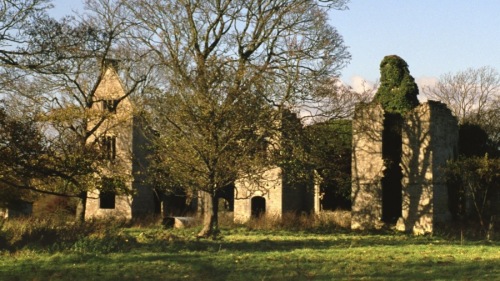
Opium/Morphine: Robinson in Ruins dwells on the medicinal reasons for growing poppies in middle England. See Middle Kingdom.
Organic: With Keiller/Robinson turning somewhat Deleuzian, Robinson in Ruins brings the organic to the fore, for example the lichen on a motorway road sign that is contemplated upon at length. Keiller refers to American biologist Lynn Margulis, and admits to his (or Robinson's) 'biophilia'. Margulis's ‘endosymbiotic' theory argues against the competitive idea of evolutionary life, countering Darwinian inspired capitalist ideology, emphasising that organisms co-habit collectively. See Combine Harvester, Lichen, Technics.
Outputs: In the public discussion following a BFI Southbank screening, some members of the audience criticised the film for having a research project feel and for artificially disinterring the character of Robinson. Keiller didn't agree with these comments, but didn't have time to respond. Academic research produces outputs; their impact is supposedly quantifiable and measurable through scientific and mathematical methods, achieved through knowledge transfer and other means of public dissemination. See AHRC.
US Interests: One of the best moments in the film occurs on the site of Greenham Common, when the camera methodically cuts in, from wide shot to close up, on a fire hydrant in the middle of field full of grazing cows. See Organic, Inorganic.
Partiality: See Objective and Subjective.
Place: The flâneur refused to be contained by place; they are abject beings who follow the boundaries of space and place. See Exterior, Flâneur, etc.
Poppies: See Opium, Profane Illumination, Wind Machine.
Post-Box: The post-box features at the beginning of the film. It offers a kind of entryway, the letter-slot becomes a mouth through which we enter the film. See Caravan, Place.
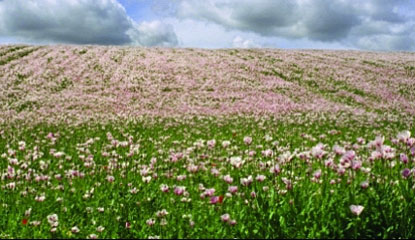
Profane Illumination: Keiller references this well-known term that Benjamin coined as central to Surrealism. It refers to the act of seeing the irrational in the everyday, perhaps with the use of opium. See Alienation, Image, Opium, Poppies, Surrealism.
Psychogeography: In his flâneur-like tendencies, Keiller follows in the footsteps of Guy Debord and the Situationists, and is generally allied to English writers like Iain Sinclair and Peter Ackroyd. The latter are both more empirical and irrational than revolutionary, compared to the original proponents of dérive/drifting; ideas around Hegelian dialectics (Debord) and Heideggerian dwelling (Keiller) don't really enter into their vocabulary. See Dwelling, Flâneur, Neo-Gothic, Psychogeography, Robinson.
Rape Seed Oil: The films tells us all about rapeseed oil production. See Organic, Inorganic, Wind Machines.
Road Sign: The road sign disrupts the flâneur, it tells him where he is going and gives distances, imposing a sense of linear time. See Forgetting, Lichen.
Robinson: Merlin Coverley has written; 'Robinson Crusoe, with its twin motifs of the imaginary voyage and isolation, provides a broad outline of a character who encapsulates the freedom and detachment of the wanderer...' See Flâneur, Psychogeography.
Ruins: Everything that can be said about ruins has been said, although the moving image, image making technology in general, preserves our memories from entering into the realm of the ruin, of revealing that which remains hidden behind the façade of the image and opening out the inside. See Absence, Flatness, Forgetting, Image, Interior, Memory, etc.
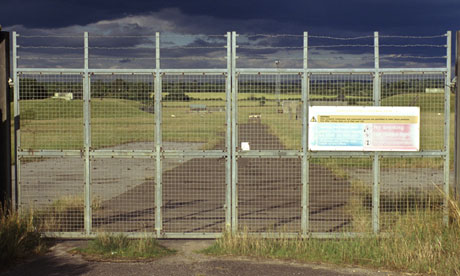
Space: See Place, Flâneur.
Spider's Web: The long durational take of a spider weaving its web, as the voice-over recounts an episode from the banking collapse highlights the fact that financialisation produces value without labour. (In the Marxist sense, the spider, in weaving its web, works, but does not labour). See Otherness, Labour, Organic, Immanence.
Subjective: Documentary theorists have frequently turned to the relativism of subjectivity to overcome the claims of objectivity. This is mistaken. The technology of the moving image is designed for mimesis. Technology remains a constant, it is a universal, mediating factor, as central as film language itself. The documentary essay sidesteps the objective-subjective polarity. See Otherness, Immanence.
Surrealism: See , Profane Illumination.
Technics: The relationship of the organic to the inorganic means that humankind has evolved through the use of machines, technology and technique. Technology is neither good nor bad, it depends on how we use it, and in turn, that depends on how we perceive our relationship to it. Humanity is not superior, it cannot overcome the machine, nor can it control it, it can only work with it, always in relation to it and recognising its otherness. See Combine Harvester, Organic, Inorganic, Otherness, etc.
Thought-Image: Benjamin's writing style is indebted to a richly ambivalent fragmented and montaged style of writing, one which conveys concepts and images simultaneously, with immediacy and sensuality. The thought-image conveys the complexity of the world without suppressing one thought by another. It makes the reader/spectator into a ‘textual-flâneur'. See Flâneur, Wanderlust.
Wanderlust (on film): See many of Chris Marker's films, including Sans Soleil (1983).
Wheat: See Combine Harvesters, Organic, Technics, etc.
Wind Machine: The first time I saw Robinson in Ruins a friend was convinced that Keiller had used wind machines because of the numerous long takes of fields of swaying crops or wild flowers ‘accidentally' entering or leaving the frame. See Frame, Flowers, Organic.
Adam Kossoff <adam.kossoff AT ntlworld.com> is an artist and writer whose recent films engage with the nature of the image and space in relation to the writings of Walter Benjamin. Not Our Darkness (2009) is distributed by the Lux. See: Adamkossoff.co.uk
Bibliography
Theodor Adorno, in B. O'Connor (ed.), The Adorno Reader, London: Blackwell Publishers, 2000.
Theodor Adorno and Hanns Eisler, Composing for Films, London: Continuum, 1994.
Merlin Coverley, Psychogeography, London: Pocket Essentials, 2010
Michael Maziere and Nina Danino (eds.), The Undercut Reader: Critical Writings on Artists' Film and Video, London: Wallflower Press, 2002.
Mute Books Orders
For Mute Books distribution contact Anagram Books
contact@anagrambooks.com
For online purchases visit anagrambooks.com






